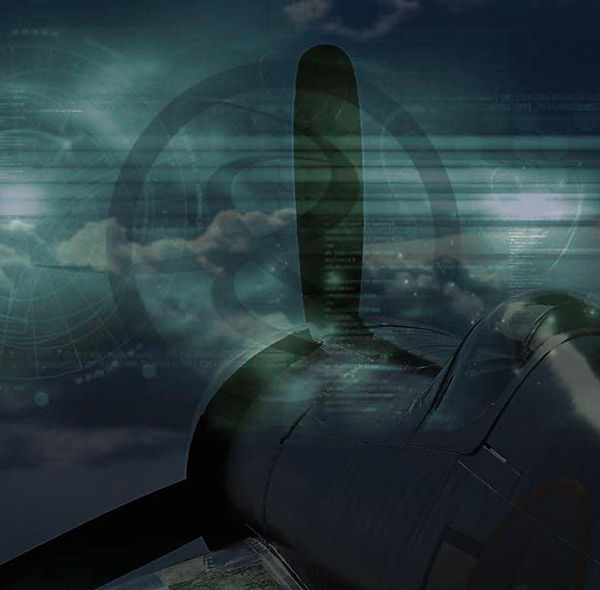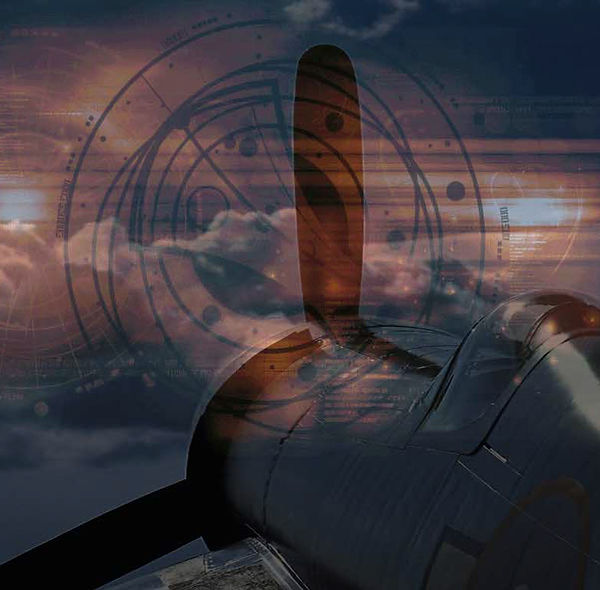
Hold your pointer on a tab in the menu on top of the page to view and handle the sub menus.



Vought (Vought-Sikorsky or Chance Vought).
U. S. Marine Corps & U. S. Navy in World War II
Produced by GOODYEAR
U. S. Marine Corps & U. S. Navy in World War II
The XF4U-1 was the first of the famed line of gull-winged fighters. It . was the original prototype with a greenhouse type canopyIt was the first U. S. fighter to exceed 400 mph in level flight. It had a Pratt-Whitney R-2800-4 radial which delivered 1,380.6 kW for take-off and 1,089.6 kW at 6,553 meters. It had two 12.7 mm Colt-Browning machine guns mounted in the nose and each wing held two more for a total of six. Its top speed was 651,7 kph. It weighed in at a maximum 4569,4 kilograms and had a range of 1722 km.
The F4U-1 with the Pratt & Whitney R-2800-8 Twin Wasp engine gave the Corsair a top speed of 415 mph and was the first production type. Some were produced with "-8W" engines.One F4U-1 was converted to mount Pratt & Whitney Wasp Major engine with 3000 hp. Both engines produced 1492,5 kW for take-off, with the water injected -8W producing an extra 186,6 kW for war emergency. Early production planes had a birdcage canopy which was later changed to a bubble type.The production "dash one" had some changes made to the canopy for better vision to the rear.It started rolling off the assembly lines in September 1942. The two Colt-Browning mounted in the nose of the prototype were removed and all six machine guns were mounted in the wings outside the propeller arc which eliminated the need for synchronization.
F4U-1A modified canopy, pilot's seat raised 0.2 m
F4U-1B procured for Royale Navy Air Service,US designation of aircraft supplied under Lend-Lease
The F4U-1C was equipped with four 20 mm cannons. The M2 cannons were equipped with flash hiders to cut muzzle blast visibility.
The F4U-1D was equipped with the normal six .50 cal.guns and this version had twin pylons for bombs or external fuel tanks.Goodyear built 4,017 FG-1 and FG-1Ds, while Brewster built 735 F-3As, all to Vought's design.
The F4U-1P was a Photo-recon version.
The XF4U-2 had a special night fighter equipement with two aux. fuel thanks.
The F4U-2 were F4U-1s converted by the Naval Aircraft Factory into a night fighters. For reasons known only to the US Navy, instead of calling it the "F4U-1N" , they gave it the F4U-2 designation.The starboard wing and the radio bay in the fuselage were adapted to accept the "XAIA" radar which was hand-built.There were other slight modifications.
The XF4U-3 was a converted F4U-1 to test a proposed turbo supercharged engine. The US Navy had the idea of a high altitude version of the F4U. In 1943, they approached Vought with the scheme.
The XF4U-3B was also a converted F4U-1 to be used by Pratt & Whitney as a test bed for the R-2800-16 engine.Vought went to work molding the Corsair fuselage around the XR-2800-16 Double Wasp engine which was fitted with two Bierman model 1009A turbo-superchargers.
Defects in the turbo-superchargers caused the project to be dropped . It could be identified by a large intake tube fitted to the belly below the engine.
The XF4U-4 started out as two modified F4U-1s designated F4U-4Xs.The modifications were, a new engine, revised and added air ducts, large oil coolers and a four bladed propeller.The aircraft's speed was increased to 450 mph and the service ceiling was increased to 41500 feet.
Five F4U-1s were built and designated XF4U-4 to speed flight testing and to incorporate more modifications of this new model.
The F4U-4 was one of the more important variants of the Corsair , many problems would arise from the proposed changes and it was equipped with a Pratt & Whitney R-2800 18W 1,567 kW (2100 hp) engine and supported a new four blade prop. The 18W engine necessitated changes in the basic airframe to handle the extra power and the turbo air intake was mounted on the inside bottom of the engine cowling.It was a fighter-bomber for all intents and purposes.It was redesigned for greater performance to cope with improved Japanese fighters later in the war.. The Army and Marine G.I.s who fought that battle on the ground remember the F4U-4 as the "Sweetheart of Okinawa". The F4U-4 was clocked at a top speed of 718 km at 7985 m.
The F4U-4B was equipped with four 20 mm. cannon instead of the .50 cal. guns used in earlier production F4U-4s.
The F4U-4C was equipped with four 20 mm cannons.
The F4U-4E was equipped with radar.
The F4U-4K was a experimental drone.
The F4U-4N was the night fighter version of the F4U-4.
The F4U-4P was a photographic version of the F4U-4. It had cameras installed in the fuselage below and behind the cockpit.
Three F4U-4Bs were equipped with a Pratt & Whitney R-2800-32W Twin Wasp Series E engine and designated XF4U-5. The prototype was flown in December 1945, a few months after World War Two had ended. It utilized all the knowledge built up over the war years and major changes were made to upgrade the F4U. The Pratt & Whitney R-2800-32W Twin Wasp featured a dual supercharger to boost engine power to 1753,7 kW at 7985,8 m. War emergency power was boosted to 2059,7 kW.
The F4U-5 greatly changed from the earlier F4Us . Metal replaced fabric on the outer wings.Armament was the same as the F4U-4. A few improvements were made solely for pilot comfort. Cockpit heating was redesigned, controls were made easier to operate . Armrests were installed on the seat, which reclined slightly.With the improvements and the -32W engine, it could operate very comfortably at altitudes approaching 13716 meters.
The F4U-5N was the night fighter version of the F4U-5.It saw combat in Korea against night intruders, widely used along with other Corsair versions for close air support.
The F4U-5NL was a winterized version of the F4U-5N. It had deicer equipment on leading edge of the wing and the horizontal stabilizer.
The F4U-5P was a photograph version of the F4U-5.It had cameras installed in three stations with retractable protective covers.A rotating camera mount was a unique feature.
The F4U-7 was built and tailored for the French Navy (the "Aeronavale"). It was equipped the same as an F4U-4 but was in an F4U-6 (AU-1) airframe. It was built specially for ground attack. It had a Pratt & Whitney R-2800-43W two-speed, two-stage engine for high altitude flight.
The Production of the dash seven began in June, 1952 and the last one was delivered to the French in December of that year.It was the last of the venerable Corsair line.
One F4U-5NL was converted to a low altitude ground attack aircraft, and designation changed to XAU-1.This plane was for close air support of troops in Korea.
The AU-1 was originally designated an F4U-6. since it was strictly a ground attack aircraft the designation was changed.Deliveries began in January 1952.It joined other Corsair versions in Korea.After Korea the French received 69 AU-1 from the U. S. Navy and used them in the Indochina and Africa campaigns.The AU-1 was powered by an R-2800-83W Double Wasp with a single stage supercharger, developing 1716,4 kW for take off and 2089,6 kW for War Emergency. Extra armor was added for protection from the small arms fire which would be encountered at the lower altitudes where the AU-1 would be working.
A fully armed AU was an awesome war machine.
The F3A-1 is a F4U-1 manufactured by Brewster.
The F3A-1D is a F4U-1 manufactured by Brewster.
The FG-1 is a F4U-1 manufactured by Goodyear.
The FG- 1D is a F4U-1D manufactured by Goodyear.
The FG-1E is a Goodyear FG-1 with radar equipment.
The FG-3 is a turbosupercharger version converted from FG-1D.
The XF2G-1 is a FG-1D with engine change , 3000 hp P & W R-4360.
The F2G-1 is a production version with 4 aux. fuel thanks and bubble canopy.
The F2G-2 is a carrier-based version of F2G.
CORSAIR - Type of Plane Description Summary
PHOTOS F4U CORSAIR
Produced by Chance Vought
U. S. Marine Corps & U. S. Navy after World War II
02
02
02


